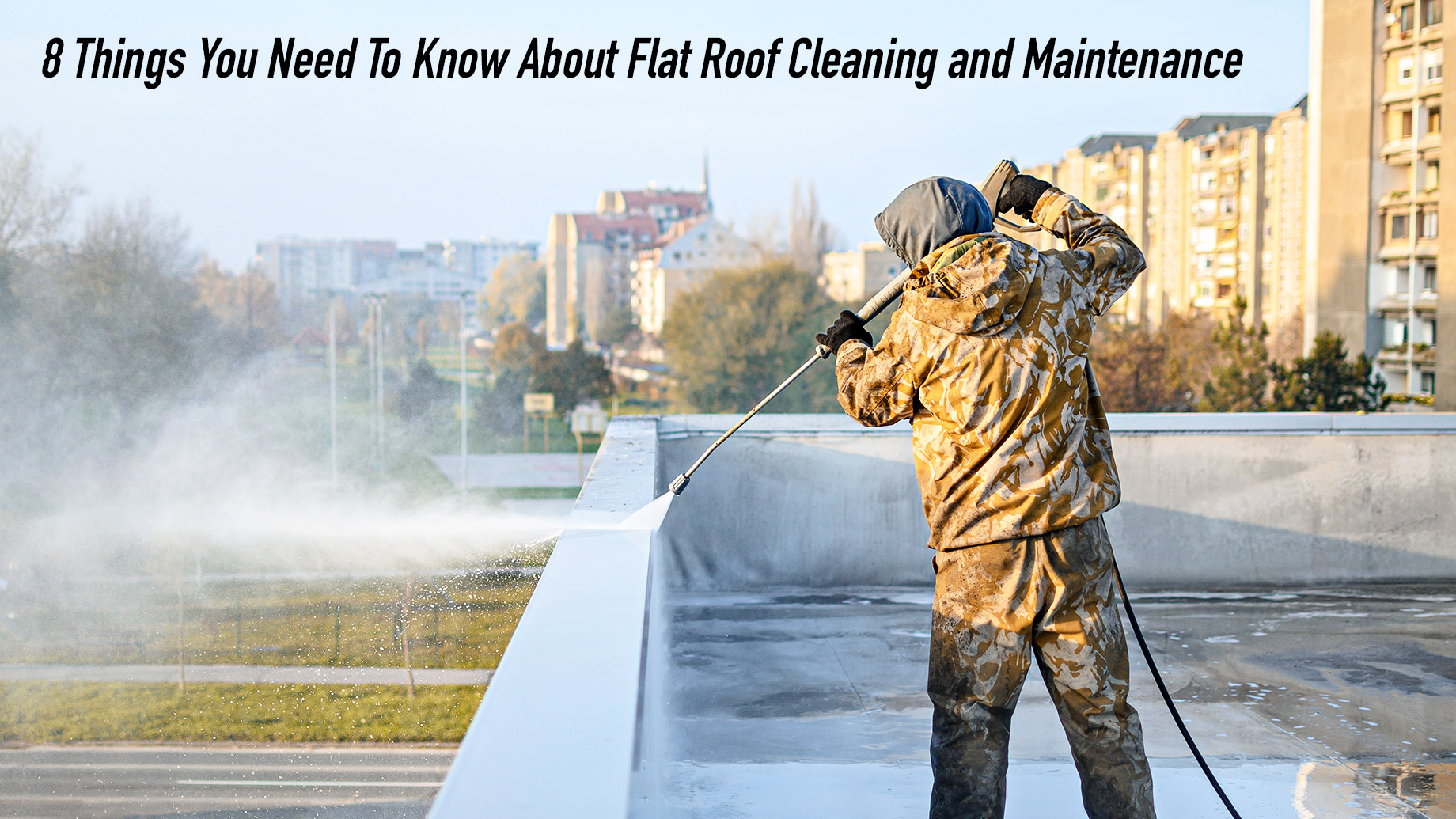
Did you know that the average small business loan is over $400,000? If you’ve already invested a lot to get your business going, you might not be eager to spend more on property maintenance. But if you have a building with a flat roof, you’ll need to ensure that it remains structurally sound and looks good.
Read on to learn eight things you need to know about flat roof cleaning and maintenance!
1. Clean Your Drains
Checking drains needs to be part of your roof cleaning routine. Just like you’d remove dead leaves and debris from your house’s gutters, you’ll need to do the same with a flat roof.
Even though flat roofs are called flat roofs, they’re not completely flat. There are drains that collect water on the roof, meaning that the roof surface has a slight slope toward those drains. But if your roof’s drains are covered in dead leaves, they can’t do their job.
Water will pool over the obstructed drains during rainfall. And this pooled water can add pressure that could damage or even break through your roof.
2. Clear Out Debris
Make debris removal an ongoing part of your flat roof cleaning routine. When the snow melts in the spring, get rid of random leaves or mud that has caked onto the roof. Similarly, do a check after summer storms.
When you commit to cleaning your roof — even minimally — each month, you’ll avoid bigger problems later. Sweep it, mop it, and look for signs of deterioration.
3. Get Pressure Washing
Wondering how to clean a flat roof? Pressure washing remains one of the most popular ways to blast away grime. And you might not even need anything beyond water to get the job done.
You can use the wand of a pressure washer to access all parts of your roof, making this a convenient method. You will want to determine a pressure setting, however, that works with your roof’s membrane before getting started. While you’ll need enough pressure to be effective, you don’t want to cause any damage.
4. Use Roof Cleaning Chemicals
Your roof cleaning routine may benefit from using some cleaning agents to remove algae, moss, and other contaminants. While you can use chlorine bleach plus other chemicals, there are more environmentally-friendly alternatives, too. You’ll want to consult with your roof cleaners to determine the right choice.
Algae and other contaminants can eat away at your roof and potentially cause structural damage. And if you have a white roof, you’ll want to get rid of unsightly stains. A pressure washing company can apply a chemical solution that penetrates the stains before blasting them away with water.
5. Look for Rips and Punctures
Your flat roof will have a protective membrane covering and sealing it from moisture. When you’re cleaning your roof, you’ll want to take time to inspect this membrane for rips or punctures. This is a critical step that can help prevent water from leaking into your building.
A roof membrane might be made of polyvinyl chloride (PVC), thermoplastic polyolefin (TPO), or other materials. Both PVC and TPO can last around 25 years, so you’ll want to keep an eye on them as they age.
For instance, heavy winter snow or springtime hail storms could impact the surface of your roof. Excessive moisture and heavy layers of snow can add significant stress. Watch for changes so your moisture-resistant membrane doesn’t lose effectiveness.
6. Add a Deck to Avoid Surface Indentations
If your roof doubles as a hangout or garden space, you might want to add a deck. A deck is a surface that is installed over the existing roof surface. Since it floats over the roof’s surface, it can be removed if you need to do any repair work.
While a roof can offer great panoramic views, you do need to exercise caution when inviting people onto it. A deck helps to offset impressions or dents in your roof’s membrane. It also can help keep organic plant matter from dropping on the roof and causing damage or stains.
7. Trim Nearby Trees
When it comes to flat roof maintenance, watch out for trees. Tall and flourishing trees will drop their leaves in the fall. And those leaves can find their way into your flat roof’s gutters.
On top of that problem, trees pose a threat during bad weather. If a storm with heavy winds blows through the area, the tree might lose limbs. And any prickly tree branch has the potential to rip through your roof’s membrane and cause water to get in.
8. Pursue Routine Inspections
Ultimately, when you own a building, you’ll need to get regular inspections. As materials age, they can decompose and lose their durability. If you’re using a building with a roof of unknown origins, get it checked right away.
A qualified roofer can check the seams to ensure that they’re intact. They’ll also assess the overall state of your roof membrane and walls. They’ll check the metal flashing and vents, too.
For roofs that serve as gathering spaces, roofers must check for sturdy parapet walls. These walls act as a guardrail for people on your roof. They also can add an aesthetic flair when they are well-maintained and feature decorative edging.
Invest in Flat Roof Cleaning
Flat roof cleaning is critical to ensure that your business looks its best — and stays safe. Clear out drains and gutters, and trim back trees that might pose a threat. Do a visual inspection each year, and turn to pressure washing to remove grime.